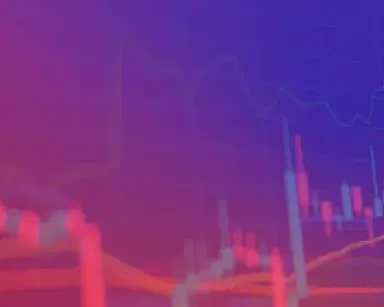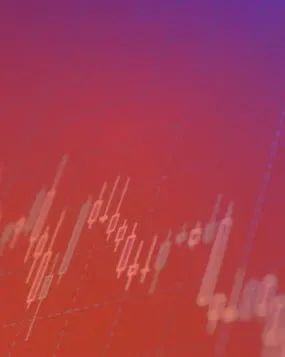- What is leverage in CFD trading?
- What is CFD margin?
- Benefits of leverage
- The costs of leverage in CFDs
- CFD leverage example
- Calculating margin
- How to manage CFD risks
- CFD margin and leverage FAQs
What is CFD leverage?
CFD leverage is the ability to trade contracts for difference without paying for the full value of your position upfront. Instead, you only need to have a smaller amount of money in your account to open a position that’s worth more.
While leverage can be a useful tool for retail traders, it will also increase your risk. So, before you start trading on leverage, it’s a good idea to learn how it works – and how to manage risk using stop losses.
Want an introduction to CFDs? Take a look at our what is CFD trading guide.
What is CFD margin?
CFD margin is the minimum amount that you’ll need to have in your account to trade a contract for difference. Different markets will require different levels of margin, and it’s always given as a percentage. This percentage tells you how much of your position’s full value you’ll need to deposit.
Generally speaking, the higher the requirement, the more volatile or illiquid the market. Highly liquid FX markets, for example, may only require 3.33% margin. Shares, on the other hand, tend to have less liquidity – so come with margin requirements of 20%.
To see the margin requirement for any City Index market, head over to the ‘Market 360’ tab on your trading platform.
You’ll need to have enough funds in your account to cover your trade’s margin requirement when you open your position, and to cover any losses as long as the position is live. This is called your initial and maintenance margin.
What is initial margin?
Initial margin is the funds you need to open a leveraged position. It’s calculated by multiplying the size of your position by the market’s margin requirement.
Let’s say, for example, that you want to buy 25 Australia 200 (our market on the ASX 200) CFDs at 7,000 and the Australia 200 has a margin factor of 5%.
- The total size of your position is (25 * 7,000) $175,000
- 5% of 175,000 is $8,750
- You need $8,750 in your account as initial margin
However, you don’t need to calculate any of this manually – whenever you open a position in the City Index platform, you’ll see how much you’ll need in your account displayed on the deal ticket or on our margin and pip calculator.
Don’t have access to the City Index platform? Open your free CFD demo account and take a look around.
What is maintenance margin?
Maintenance margin is the funds you need in your account to keep your leveraged position open. You’ll need to ensure that you have the required funds in your account to cover your margin at all times – especially if your position makes a loss.
Maintenance margin requirements are the same as initial requirements – if a market has a 3.33% margin factor, then you’ll need 3.33% of your trade’s value in your account to avoid the risk of it being closed. However, the actual margin required will change as the position’s value goes up and down.
Your maintenance margin is used to cover any losses your position may incur. If your market moves against you, the loss will lower the total margin in your account. This is why we recommend trading with plenty of spare margin at all times.
Benefits and risks of CFD margin
Trading on leverage means you can gain the same amount of market exposure by depositing just a small fraction of the total value of your trade. This can be useful to CFD traders because it means that they can put their money to use elsewhere.
In our example above, you only had to pay 5% of $175,000, or $8,750, to open your position. That frees up the remaining $166,250, while still enabling you to trade at levels that are usually off limits to retail traders without leverage.
Plus, leverage helps magnify your returns, which is great news if the market moves in the direction that you expect. However, this comes with the downside that leverage will also magnify your losses.
Another risk of leverage is that your positions may be at risk of being closed automatically if you don’t have enough margin in your account to cover any losses. In this situation, you’ll be placed on margin call.
What is margin call?
Margin call is when you no longer have the required funds in your account to keep a position open. It means that your trade is at risk of being closed.
Say, for instance, that you’ve only deposited the required $8,750 to buy your Australia 200 CFDs. If the index drops ten points and your position sits at -$250, then you’ll only have $8,500 equity in your account, which isn’t enough to cover your margin requirement (which now stands at 5% of $172,500, or $8,625).
This situation is called a margin call, and means your position is at risk of being closed.
To assist in monitoring your margin level, we summarise your net equity together with your margin requirements in your daily statement and within your account details on the trading platform. ASIC requires City Index to close positions after funds have dropped below 50% of the trade's margin requirement.
To avoid margin calls, you should always ensure you have sufficient funds in your account. It is very important you are aware of your net equity balance and the margin requirement for your open positions.
Monitoring your margin level
When you have multiple positions open at once, keeping track of your total margin requirement can be tricky. But again, you don’t need to calculate anything yourself. Instead, you can use the Margin Indicator on the City Index platform.
The Margin Indicator is always displayed at the top of the City Index platform, or in the dropdown from the top of the mobile app. It tells you how much equity you have in your account, compared to your total margin requirement.
- If the indicator is greater than 100%, then you have the funds required to keep your positions open
- If it falls below 100%, you are at risk of your trade falling further and automatically being closed out
- At 80%, we’ll display a warning symbol next to the indicator
- Should it fall below 50%, you no longer have enough funds in your account to cover your total margin
What should you do if you are on margin call?
If you are on margin call, you have three potential options:
- Close out your trade, realise the loss and reduce your overall margin requirement
- Reduce the size of your positions to free up some equity in your account
- Add additional funds to your account. You’ll need to cover the shortfall in margin, and may want to consider additional funds to sustain any further losses
However, it is never guaranteed that you will have enough time to deposit more funds or close some of your positions to increase your margin level in rapidly changing market conditions. It is your responsibility to monitor your accounts at all times and ensure you have sufficient margin. If one or more of your positions earns a loss, a margin amount that appeared sufficient may quickly become insufficient.
The costs of leveraged trading
As well as margin, there are other costs you’ll have to pay to cover a leveraged CFD trade. Chief of these is overnight financing.
When you trade on leverage, your provider is essentially lending you the funds to cover the full size of your position. Overnight financing is the cost of keeping this loan open for more than a single trading day.
Find out more about the costs of CFD trading.
CFD leverage example: share trading vs CFDs
To see how leveraged CFDs work in practice, let’s take a look at an example.
You want to trade 1,000 shares in company XYZ, which has a current share price of $2.50. You could invest in XYZ using share dealing, or you could buy 1,000 XYZ CFDs. Find out more about CFDs vs investing.
Either way, the total size of your position would be (2.50 * 1,000) $2,500.
| CFD trade using leverage | |
|---|---|
| No. of CFDs: | 1,000 |
| Trade total value: | $2,500 |
| Margin requirement: | 20% |
| Total margin: | $2,500 x 20% = $500 |
| Non-leveraged share trade | |
| No. of shares: | 1,000 |
| Trade total value: | $2,500 |
| Deposit required: | 100% |
| Deposit required: | $2,500 |
XYZ’s margin requirement is 20%. So by using CFDs, you only have to deposit $500 to execute your trade.
By trading on leverage, you’ve freed up additional funds to use elsewhere.
How does leverage affect profit?
Now let’s say that company XYZ’s share price rallies after strong earnings, increasing to $2.60 – so you decide to close out your trade.
With both share dealing and CFD trading, you would have made a return of (2.60 - 2.50 * 1000) $100. However, the return on your CFD would be 20%, compared to just 4% on your investment.
Why? Because you only deposited $500 to open the CFD position.
| CFD trade using leverage | |
|---|---|
| Margin: | $500 |
| Profit made: | $100 |
| Return: | 20% |
| Non-leveraged share trade | |
| Shares bought: | $2,500 |
| Profit made: | $100 |
| Return: | 4% |
How leverage can magnify losses
That’s how leverage works with a profitable position – but the same will apply if you close out at a loss.
Suppose your trade on XYZ was unsuccessful and you decide to close with a $100 loss. In this scenario, the return on your CFD deposit would be -20%, because you’ve lost $100 when you deposited $500.
The return on your share trade, meanwhile, would be -4%. Using leverage has magnified your losses.
| CFD trade using leverage | |
|---|---|
| Margin: | $500 |
| Profit made: | $100 |
| Return: | -20% |
| Non-leveraged share trade | |
| Shares bought: | $2,500 |
| Profit made: | $100 |
| Return: | -4% |








